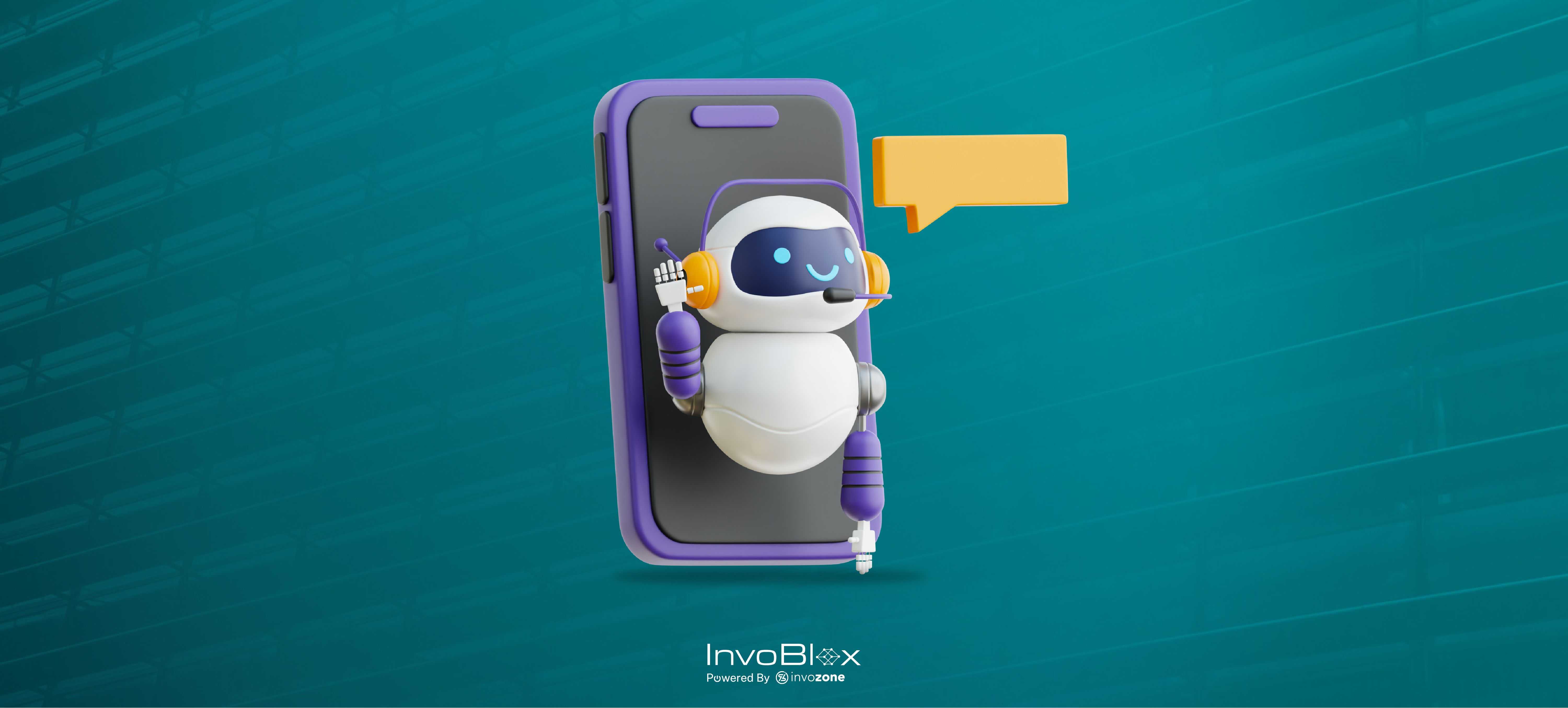
Chatbots Vs. Conversational AI - A Thorough Comparison
Table of Contents
We not only use different words for chatbots and conversational AI, however they are quite different things. Chatbots are like helpful friends, there to help you out with specific tasks. using a set of predefined rules. If you ask a chatbot something that it does not know, it might say, "Sorry, I don't understand.”
Whereas, conversational AI goes beyond the limitations of chatbots. Conversational AI tools include smart systems understanding and reacting to human languages in more complex ways. Nonetheless, chatbots have become more popular in the business world.
A chatbot can be found almost on every website these days. Approximately, 80% of customers have interacted with chatbots in one way or another. They have gained popularity because of their 24/7 availability to customers, especially the role of AI in the supply chain.
It is relatively easy to mix up chatbots with conversational AI as they can perform better when it comes to communicating. Even though they seem to solve the same problems, like creating a conversational experience, there are also some clear differences.
As we get along, we will explore the features of each technology, how they work, and compare chatbots and conversational AI use cases to give your business a competitive edge.
What is a chatbot?
A chatbot is software designed to convey like a human and answer customer questions. After using a website for a while, you may have seen a chat or voice messaging prompt appear on the screen, that is a chatbot at work. A chatbot is like an assistant that helps you with straightforward things like scheduling an appointment, checking on the order status, and requesting for a refund.
For instance, if a user types "schedule appointment," the chatbot will identify the keyword "schedule" and understands that the user wants to set up an appointment. This keyword-based method allows chatbots to figure out the user intent and provide the right help.
A chatbot that helps users in education solve their problems related to any subject is called an education chatbot.
However, there are further two types of chatbots: rule-based chatbots and AI-based chatbots.
Rule-based Chatbots:
Rule-based chatbots only use predetermined answers to questions and do not learn from talking to people. They can reply with pre-written messages that are sent when specific keywords and phrases are used. Rule-based chatbots don't know what to do when the user asks new questions.
AI-based Chatbots:
AI-based chatbots learn from interaction with humans. So they can better understand the needs of their users and respond intelligently based on their needs. AI empowered blockchains and chatbots can provide added security and transparency to users enhancing their overall experience.
What is conversational AI?
On the other hand, conversational ai platform software includes chatbots and virtual assistants like Siri and Alexa that use machine learning and natural language processing to talk with users. Conversational AI uses both text and voice input, understands what each question means, and gives answers that are more relevant to the situation, resulting in more real and dynamic interactions.
Conversational ai strategy involves having a skilled partner who can have in-depth conversations and help you with jobs like making personal investment suggestions, planning the perfect trip, or fixing complicated technical issues.
There are three types of conversational ai design, and they are
1. Chatbots:
Chatbots use conversational AI to make it seem like they are having a real conversation. Not all chatbots use conversational AI. However, the ones that use them tend to give more natural and useful answers because they are trained with natural language processing models.
2. Virtual Assistants:
Virtual assistants are chatbots that are powered by AI and can understand what you are saying and help you by performing specific tasks. Natural language processing (NLP) and natural language understanding (NLU) models power them. This makes the results more relevant, correct, and interesting.
3. Voice Assistants:
Conversational ai voice assistants are pieces of software that listen and do what you tell them to do. It uses voice recognition, voice synthesis, and language processing algorithms to understand the command and give the right outputs. For example, Amazon's Alexa, Apple's Siri, Microsoft's Cortana, etc.
The major difference between a chatbot and conversational AI
The goal of chatbots vs conversational ai is to make conversions with customers more efficient. However, deep learning conversational AI goes a step further by using advanced natural language processing, machine learning, and contextual knowledge. Conversational AI gives you a more interactive, personalized, and human-like experience. While chatbots are only good for specific tasks and quick replies.
Here are some ways that conversational AI and chatbots differ from each other.
|
Aspects |
Chatbots |
Conversational AI |
|
Mode of Communication |
Keyword-based responses that are predefined |
Conversations with a lot of context and individualization. |
|
Capacity for Learning |
Incapable of learning beyond basic rules |
Continuous learning through machine learning |
|
Understanding Intention |
There is insufficient knowledge of user intent. |
Advanced NLP for understanding user intent and context |
|
Multilingual |
Support limited languages |
Capable of supporting multiple languages |
|
Workflows |
Does not integrate with the workflow |
Integrated with workflows |
|
User Authentication |
Does not support user authentication |
Enables user authentication |
|
Voice and conversational IVR |
Does not support such inputs |
Support these inputs |
|
Use cases |
Basic customer service, FAQs |
Advanced customer service, sales, and support |
Examples of chatbots and conversational AI in customer services
In customer service, rule-based chatbots and conversational AI differ. Rule-based chatbots can handle simple queries but struggle to understand complicated user intents. A rule-based chatbot may deliver generic product information but not personalized recommendations based on a customer's wants.
Conversational AI chatbots understand context, user intents, and natural language well. They can change responses, have meaningful conversations, and come up with new ideas. Conversational AI tools may recognize user preferences, offer related products, and lead customers through the shopping process, improving the user experience and sales.
Let's compare chatbots and conversational AI in customer care with several examples:
1. Rule-Based Chatbots:
Predefined rules are used in rule-based chatbots. A customer care chatbot on a website can let users check the order status or provide delivery details. It responds to specified rules and keywords. While it can handle simple queries efficiently, it may struggle with complex user inputs.
2. Conversational AI chatbots:
A conversational AI chatbot provides better customer support by using natural language processing and machine learning. A conversational ai in banking app may understand user intents and give personalized advice. It can resolve account difficulties, conversational ai in financial services suggest products based on user preferences, and transfer funds. User interactions can teach the chatbot to respond more naturally and contextually.
3. Virtual Assistant:
In customer service, conversational AI occurs in virtual assistants like Alexa and Siri. They can interpret natural language and perform many activities beyond customer support. Virtual assistants can answer general knowledge questions, update the weather, play music, make reminders, and control smart home gadgets. They use powerful NLP and ML algorithms to understand and respond more accurately and relevantly.
Benefits of conversational AI over chatbots
1. NLP Powered:
Chatbots have insufficient knowledge of user intent. While conversational AI uses advanced natural language processing to understand user intent and context, That's why we can say conversational AI is more beneficial than chatbots.
2. Sentimental Analysis:
Sentimental analysis in conversational AI transforms the way in which chatbots talk to people. Conversational AI gives personal and caring responses by understanding and analyzing the emotions that people express in text. This makes interactions more meaningful and satisfying, makes the whole experience better, and helps people form stronger bonds with conversational AI.
3. Multilingual Capabilities:
Chatbots are able to support limited languages because they have a set of predefined rules and answers. Conversational AI is able to support multiple languages and give users personal suggestions as well because conversational AI uses advanced natural language processing to understand every type of language.
How are chatbots and conversational AI related?
Although chatbots and conversational AI differ, they are closely related technologies. You can take chatbots as a subset of conversational AI. Let’s get into the details of how they are similar.
1. Evolutionary Relationship
The relationship between chatbots and conversational AI can be seen as evolutionary. We have seen traces of Chatbots since the 1960s, however, their first versions were not that complex and only permitted straight lines of conversation. Users were made to move from one point to another without realizing the chatbot doings. Early chatbots also put a lot of importance on friendly interactions.
For example, answering "hi" with "hello" was seen as a big deal. As AI got better with time, chatbots underwent big changes. AI advancements made it possible for these virtual agents to understand normal language and respond in a way that was specific to the user. At the moment, AI-powered virtual agents have complex conversations and learn from past contacts to improve the future.
2. Shared technologies
Conversational AI and chatbots both use basic technologies like sentiment analysis, machine learning, and natural language processing. These technologies allow both systems to understand what users are saying, find patterns, and respond in the right way. On the other hand, conversational AI technologies are similar to a higher level by adding more complex algorithms and models that help people understand and remember what is being said during talks.
3. Similar use cases
Conversational AI and chatbots are often used to improve relationships with customers and make business processes run more smoothly.
Take a look at these examples:
-
Customer support
Conversational AI and chatbots are very important for quickly answering customer questions. Conversational AI goes one step further by looking at the context of the chat to offer more personalized help. Chatbots can give predefined answers based on specific keywords.
-
Task automation
Both options help agents do things like set reminders, write case notes, and find relevant information. By automating regular tasks, they allow support teams to work on more complex tasks that need human touch.
How to choose the right solution for your businesses
When you go for AI-powered solutions, like chatbots and conversational AI, you need to carefully consider your choices. It is very crucial to think about the several things in order to make an informed decision:
1. Nature of Interaction
There may be a need for a chatbot if your business deals with simple, common customer questions.
Imagine you have an online shop. A chatbot can help customers check up on their order status, follow shipments, and answer common queries like return policies, et cetera. It is like having a virtual assistant that handles routine tasks efficiently. Conversational AI is the way to go if your business needs to talk to people in a more complex and personalized way.
Imagine you run a travel agency. Conversational ai in travel can figure out what information a customer wants when they ask about trip packages. It can even give them personalized suggestions based on their likes, dislikes, past trips, and preferences. This makes the experience more interesting and unique.
2. Scalability
Conversational AI and chatbots can save a lot of money on operations by making work easier and reducing service costs. Chatbots can handle a lot of conversations, but their ability to grow may be limited by the predefined rules and answers. For example, banks use chatbots to help customers find out their account balances and look up past transactions. Because these questions are common and can get a lot of attention at peak times, chatbots are a good way to make sure that customers get quick and correct answers.
If you expect a lot of interactions, just an AI conversational platform is a better and more scalable option because it has the ability to learn and improve over time through machine learning. For example, conversational AI in ecommerce platforms can handle conversations with customers during big sales events. As the number of customer questions about goods, discounts, and shipping rises, a conversational AI chatbot's ability to understand the situation and make personalized suggestions helps in handling a large number of interactions efficiently.
3. Personalization
Both chatbots and conversational AI are very important for making the customer experience more personalized. They enhance engagement by adapting to each person's likes, dislikes, needs, and actions.
Chatbots help with personalized service by quickly getting information about customers so they can give them useful information. For example, an airline chatbot can find out about a traveler's future flights and let them know about any delays or departure gates in real time, making the experience easier and more personalized.
A lot of advanced machine learning goes into conversational AI, which makes customization even better, such as by character AI, where we customize characters of our interest. Conversational AI can make personalized suggestions by looking at past interactions and knowing what's going on in real time.
4. Use Case and Industry
Chatbots might work better in fields like customer service, manufacturing, and retail, where interactions are more standard and answers need to be given quickly.
For example, chatbots and conversational ai hotels are used to answer questions from guests, take bookings for rooms, and provide concierge services. E-commerce and banking are two other fields that gain from chatbots. A chatbot that is used for financial services is called a finance chatbot.
-
Conversational AI in healthcare industry
Conversational AI in the healthcare industry helps set up appointments, figure out what symptoms someone is having, and provide medical knowledge. Conversational AI's advanced features make it possible to fully understand what patients need, which leads to better patient healthcare delivery. Conversational AI is also useful in customer service, schooling, media, travel, and many other fields.
-
Conversational ai marketing:
Conversational AI is changing the banking industry. It enables banks to provide personalized and efficient customer service through virtual assistants and chatbots by combining artificial intelligence and natural learning processes. These systems can do many things, like check your balance, look up your transaction history, move funds, and even give you financial advice. Conversational AI is making banking easy to use.
-
Conversational ai in media:
Conversational AI is changing the media industry by giving people more personalized and interactive experiences. Media companies can interact with audiences, provide personalized content, and learn a lot from conversational AI.
-
Conversational ai hospitality:
Conversational AI is changing how hotels are run! With the help of AI and natural language processing, hotels and resorts can now offer personalized interactions with guests. Through chatbots and virtual concierges. Conversational AI improves the hospitality experience with fast help, suggestions, and quick service.
The future of chatbot vs conversational AI
There is a lot of similarity between chatbots and conversational AI, so it would be wrong to say that they are two separate ideas. Let's talk about chatbots vs. conversational ai future. As virtual support agents, chatbots are computer programmes that handle text and voice-based contact and customer service. Conversational AI is the technology that makes these customer service calls sound like real people.
Conversational AI is becoming popular because it lets customers connect with businesses in a way that feels like talking to a real person. A recent study found that conversational ai automation interfaces impacted 52% more companies because of COVID-19. This shows that many companies are interested in this technology. This percentage is estimated to increase in the near future, providing a new way for companies to engage with their customers.
We trust this guide has refined your understanding of AI. Craving more insights and expert advice? Explore our diverse range of AI-related blog posts or contact us. If you have questions or need a touch of AI wizardry, our experts are only a message away. Elevate your journey in the world of artificial intelligence today!
Table of Contents
We not only use different words for chatbots and conversational AI, however they are quite different things. Chatbots are like helpful friends, there to help you out with specific tasks. using a set of predefined rules. If you ask a chatbot something that it does not know, it might say, "Sorry, I don't understand.”
Whereas, conversational AI goes beyond the limitations of chatbots. Conversational AI tools include smart systems understanding and reacting to human languages in more complex ways. Nonetheless, chatbots have become more popular in the business world.
A chatbot can be found almost on every website these days. Approximately, 80% of customers have interacted with chatbots in one way or another. They have gained popularity because of their 24/7 availability to customers, especially the role of AI in the supply chain.
It is relatively easy to mix up chatbots with conversational AI as they can perform better when it comes to communicating. Even though they seem to solve the same problems, like creating a conversational experience, there are also some clear differences.
As we get along, we will explore the features of each technology, how they work, and compare chatbots and conversational AI use cases to give your business a competitive edge.
What is a chatbot?
A chatbot is software designed to convey like a human and answer customer questions. After using a website for a while, you may have seen a chat or voice messaging prompt appear on the screen, that is a chatbot at work. A chatbot is like an assistant that helps you with straightforward things like scheduling an appointment, checking on the order status, and requesting for a refund.
For instance, if a user types "schedule appointment," the chatbot will identify the keyword "schedule" and understands that the user wants to set up an appointment. This keyword-based method allows chatbots to figure out the user intent and provide the right help.
A chatbot that helps users in education solve their problems related to any subject is called an education chatbot.
However, there are further two types of chatbots: rule-based chatbots and AI-based chatbots.
Rule-based Chatbots:
Rule-based chatbots only use predetermined answers to questions and do not learn from talking to people. They can reply with pre-written messages that are sent when specific keywords and phrases are used. Rule-based chatbots don't know what to do when the user asks new questions.
AI-based Chatbots:
AI-based chatbots learn from interaction with humans. So they can better understand the needs of their users and respond intelligently based on their needs. AI empowered blockchains and chatbots can provide added security and transparency to users enhancing their overall experience.
What is conversational AI?
On the other hand, conversational ai platform software includes chatbots and virtual assistants like Siri and Alexa that use machine learning and natural language processing to talk with users. Conversational AI uses both text and voice input, understands what each question means, and gives answers that are more relevant to the situation, resulting in more real and dynamic interactions.
Conversational ai strategy involves having a skilled partner who can have in-depth conversations and help you with jobs like making personal investment suggestions, planning the perfect trip, or fixing complicated technical issues.
There are three types of conversational ai design, and they are
1. Chatbots:
Chatbots use conversational AI to make it seem like they are having a real conversation. Not all chatbots use conversational AI. However, the ones that use them tend to give more natural and useful answers because they are trained with natural language processing models.
2. Virtual Assistants:
Virtual assistants are chatbots that are powered by AI and can understand what you are saying and help you by performing specific tasks. Natural language processing (NLP) and natural language understanding (NLU) models power them. This makes the results more relevant, correct, and interesting.
3. Voice Assistants:
Conversational ai voice assistants are pieces of software that listen and do what you tell them to do. It uses voice recognition, voice synthesis, and language processing algorithms to understand the command and give the right outputs. For example, Amazon's Alexa, Apple's Siri, Microsoft's Cortana, etc.
The major difference between a chatbot and conversational AI
The goal of chatbots vs conversational ai is to make conversions with customers more efficient. However, deep learning conversational AI goes a step further by using advanced natural language processing, machine learning, and contextual knowledge. Conversational AI gives you a more interactive, personalized, and human-like experience. While chatbots are only good for specific tasks and quick replies.
Here are some ways that conversational AI and chatbots differ from each other.
|
Aspects |
Chatbots |
Conversational AI |
|
Mode of Communication |
Keyword-based responses that are predefined |
Conversations with a lot of context and individualization. |
|
Capacity for Learning |
Incapable of learning beyond basic rules |
Continuous learning through machine learning |
|
Understanding Intention |
There is insufficient knowledge of user intent. |
Advanced NLP for understanding user intent and context |
|
Multilingual |
Support limited languages |
Capable of supporting multiple languages |
|
Workflows |
Does not integrate with the workflow |
Integrated with workflows |
|
User Authentication |
Does not support user authentication |
Enables user authentication |
|
Voice and conversational IVR |
Does not support such inputs |
Support these inputs |
|
Use cases |
Basic customer service, FAQs |
Advanced customer service, sales, and support |
Examples of chatbots and conversational AI in customer services
In customer service, rule-based chatbots and conversational AI differ. Rule-based chatbots can handle simple queries but struggle to understand complicated user intents. A rule-based chatbot may deliver generic product information but not personalized recommendations based on a customer's wants.
Conversational AI chatbots understand context, user intents, and natural language well. They can change responses, have meaningful conversations, and come up with new ideas. Conversational AI tools may recognize user preferences, offer related products, and lead customers through the shopping process, improving the user experience and sales.
Let's compare chatbots and conversational AI in customer care with several examples:
1. Rule-Based Chatbots:
Predefined rules are used in rule-based chatbots. A customer care chatbot on a website can let users check the order status or provide delivery details. It responds to specified rules and keywords. While it can handle simple queries efficiently, it may struggle with complex user inputs.
2. Conversational AI chatbots:
A conversational AI chatbot provides better customer support by using natural language processing and machine learning. A conversational ai in banking app may understand user intents and give personalized advice. It can resolve account difficulties, conversational ai in financial services suggest products based on user preferences, and transfer funds. User interactions can teach the chatbot to respond more naturally and contextually.
3. Virtual Assistant:
In customer service, conversational AI occurs in virtual assistants like Alexa and Siri. They can interpret natural language and perform many activities beyond customer support. Virtual assistants can answer general knowledge questions, update the weather, play music, make reminders, and control smart home gadgets. They use powerful NLP and ML algorithms to understand and respond more accurately and relevantly.
Benefits of conversational AI over chatbots
1. NLP Powered:
Chatbots have insufficient knowledge of user intent. While conversational AI uses advanced natural language processing to understand user intent and context, That's why we can say conversational AI is more beneficial than chatbots.
2. Sentimental Analysis:
Sentimental analysis in conversational AI transforms the way in which chatbots talk to people. Conversational AI gives personal and caring responses by understanding and analyzing the emotions that people express in text. This makes interactions more meaningful and satisfying, makes the whole experience better, and helps people form stronger bonds with conversational AI.
3. Multilingual Capabilities:
Chatbots are able to support limited languages because they have a set of predefined rules and answers. Conversational AI is able to support multiple languages and give users personal suggestions as well because conversational AI uses advanced natural language processing to understand every type of language.
How are chatbots and conversational AI related?
Although chatbots and conversational AI differ, they are closely related technologies. You can take chatbots as a subset of conversational AI. Let’s get into the details of how they are similar.
1. Evolutionary Relationship
The relationship between chatbots and conversational AI can be seen as evolutionary. We have seen traces of Chatbots since the 1960s, however, their first versions were not that complex and only permitted straight lines of conversation. Users were made to move from one point to another without realizing the chatbot doings. Early chatbots also put a lot of importance on friendly interactions.
For example, answering "hi" with "hello" was seen as a big deal. As AI got better with time, chatbots underwent big changes. AI advancements made it possible for these virtual agents to understand normal language and respond in a way that was specific to the user. At the moment, AI-powered virtual agents have complex conversations and learn from past contacts to improve the future.
2. Shared technologies
Conversational AI and chatbots both use basic technologies like sentiment analysis, machine learning, and natural language processing. These technologies allow both systems to understand what users are saying, find patterns, and respond in the right way. On the other hand, conversational AI technologies are similar to a higher level by adding more complex algorithms and models that help people understand and remember what is being said during talks.
3. Similar use cases
Conversational AI and chatbots are often used to improve relationships with customers and make business processes run more smoothly.
Take a look at these examples:
-
Customer support
Conversational AI and chatbots are very important for quickly answering customer questions. Conversational AI goes one step further by looking at the context of the chat to offer more personalized help. Chatbots can give predefined answers based on specific keywords.
-
Task automation
Both options help agents do things like set reminders, write case notes, and find relevant information. By automating regular tasks, they allow support teams to work on more complex tasks that need human touch.
How to choose the right solution for your businesses
When you go for AI-powered solutions, like chatbots and conversational AI, you need to carefully consider your choices. It is very crucial to think about the several things in order to make an informed decision:
1. Nature of Interaction
There may be a need for a chatbot if your business deals with simple, common customer questions.
Imagine you have an online shop. A chatbot can help customers check up on their order status, follow shipments, and answer common queries like return policies, et cetera. It is like having a virtual assistant that handles routine tasks efficiently. Conversational AI is the way to go if your business needs to talk to people in a more complex and personalized way.
Imagine you run a travel agency. Conversational ai in travel can figure out what information a customer wants when they ask about trip packages. It can even give them personalized suggestions based on their likes, dislikes, past trips, and preferences. This makes the experience more interesting and unique.
2. Scalability
Conversational AI and chatbots can save a lot of money on operations by making work easier and reducing service costs. Chatbots can handle a lot of conversations, but their ability to grow may be limited by the predefined rules and answers. For example, banks use chatbots to help customers find out their account balances and look up past transactions. Because these questions are common and can get a lot of attention at peak times, chatbots are a good way to make sure that customers get quick and correct answers.
If you expect a lot of interactions, just an AI conversational platform is a better and more scalable option because it has the ability to learn and improve over time through machine learning. For example, conversational AI in ecommerce platforms can handle conversations with customers during big sales events. As the number of customer questions about goods, discounts, and shipping rises, a conversational AI chatbot's ability to understand the situation and make personalized suggestions helps in handling a large number of interactions efficiently.
3. Personalization
Both chatbots and conversational AI are very important for making the customer experience more personalized. They enhance engagement by adapting to each person's likes, dislikes, needs, and actions.
Chatbots help with personalized service by quickly getting information about customers so they can give them useful information. For example, an airline chatbot can find out about a traveler's future flights and let them know about any delays or departure gates in real time, making the experience easier and more personalized.
A lot of advanced machine learning goes into conversational AI, which makes customization even better, such as by character AI, where we customize characters of our interest. Conversational AI can make personalized suggestions by looking at past interactions and knowing what's going on in real time.
4. Use Case and Industry
Chatbots might work better in fields like customer service, manufacturing, and retail, where interactions are more standard and answers need to be given quickly.
For example, chatbots and conversational ai hotels are used to answer questions from guests, take bookings for rooms, and provide concierge services. E-commerce and banking are two other fields that gain from chatbots. A chatbot that is used for financial services is called a finance chatbot.
-
Conversational AI in healthcare industry
Conversational AI in the healthcare industry helps set up appointments, figure out what symptoms someone is having, and provide medical knowledge. Conversational AI's advanced features make it possible to fully understand what patients need, which leads to better patient healthcare delivery. Conversational AI is also useful in customer service, schooling, media, travel, and many other fields.
-
Conversational ai marketing:
Conversational AI is changing the banking industry. It enables banks to provide personalized and efficient customer service through virtual assistants and chatbots by combining artificial intelligence and natural learning processes. These systems can do many things, like check your balance, look up your transaction history, move funds, and even give you financial advice. Conversational AI is making banking easy to use.
-
Conversational ai in media:
Conversational AI is changing the media industry by giving people more personalized and interactive experiences. Media companies can interact with audiences, provide personalized content, and learn a lot from conversational AI.
-
Conversational ai hospitality:
Conversational AI is changing how hotels are run! With the help of AI and natural language processing, hotels and resorts can now offer personalized interactions with guests. Through chatbots and virtual concierges. Conversational AI improves the hospitality experience with fast help, suggestions, and quick service.
The future of chatbot vs conversational AI
There is a lot of similarity between chatbots and conversational AI, so it would be wrong to say that they are two separate ideas. Let's talk about chatbots vs. conversational ai future. As virtual support agents, chatbots are computer programmes that handle text and voice-based contact and customer service. Conversational AI is the technology that makes these customer service calls sound like real people.
Conversational AI is becoming popular because it lets customers connect with businesses in a way that feels like talking to a real person. A recent study found that conversational ai automation interfaces impacted 52% more companies because of COVID-19. This shows that many companies are interested in this technology. This percentage is estimated to increase in the near future, providing a new way for companies to engage with their customers.
We trust this guide has refined your understanding of AI. Craving more insights and expert advice? Explore our diverse range of AI-related blog posts or contact us. If you have questions or need a touch of AI wizardry, our experts are only a message away. Elevate your journey in the world of artificial intelligence today!





